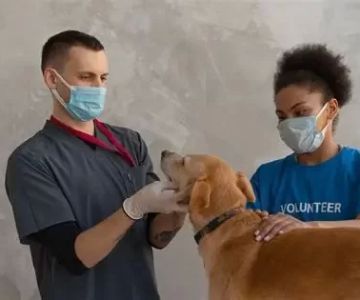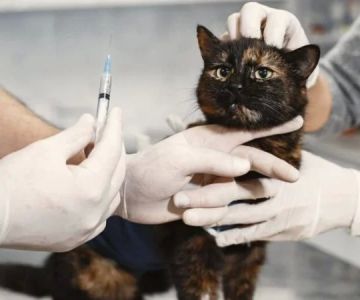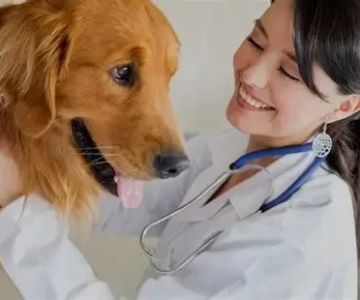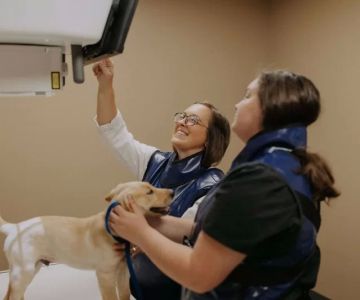What Does WNL Mean in Veterinary Terms? Understanding the Common Abbreviation
- WNL Definition and Meaning in Veterinary Medicine
- How WNL is Used in Veterinary Practice
- Examples of WNL in Veterinary Contexts
- Why Understanding WNL is Important for Pet Owners
- WNL vs. Other Common Veterinary Abbreviations
If you've ever taken your pet to the vet and seen the term “WNL” written on their medical chart, you may have wondered what it means. As a pet owner myself, I’ve encountered this abbreviation many times, and it always raises a bit of curiosity. In veterinary medicine, WNL is an abbreviation you’ll often see on diagnostic reports and in communications from veterinarians. So, what does WNL mean in veterinary terms? And how does it relate to your pet's health? Let’s dive into this commonly used term and explain it in simple terms.
1. WNL Definition and Meaning in Veterinary Medicine
WNL stands for "Within Normal Limits." It is a term used by veterinarians to describe findings that fall within the expected or healthy range during an examination or diagnostic test. For example, when a vet conducts blood work, they may report that the results are “WNL,” indicating that everything looks normal and no abnormalities were found. This is great news for pet owners, as it means there are no signs of illness or health concerns based on the specific tests or measurements taken.
In my own experience, hearing that my pet’s results were WNL always brought a sigh of relief. It's a simple and clear way for a veterinarian to tell you that the diagnostic results indicate no significant problems. The term WNL is commonly used in many areas of veterinary medicine, including physical exams, laboratory tests, radiology, and other diagnostic procedures.
2. How WNL is Used in Veterinary Practice
In veterinary practice, WNL is often used in the context of a physical exam, laboratory tests, or imaging results. It indicates that all measured variables are within the range that is considered normal for that specific pet’s age, species, and breed. For example, during a routine checkup, if a vet finds that your dog’s heart rate, respiration, and temperature are within the normal range, they may write "WNL" in the chart next to those measurements. It’s a quick way to document normal findings without delving into specifics.
For instance, when my cat, Bella, went in for her annual wellness checkup, the veterinarian examined her vital signs and mentioned that everything was WNL. This meant that her heart, lungs, and overall bodily function were all functioning properly. Similarly, when Bella had blood work done, the results showed that her kidney function, liver enzymes, and other markers were WNL, indicating that everything was operating within the expected range for a healthy cat.
3. Examples of WNL in Veterinary Contexts
Let’s look at some examples of how WNL is used in different veterinary contexts. These are common situations where you might see WNL in your pet’s medical records:
1. Physical Exam
During a physical exam, your veterinarian will assess your pet’s vital signs, such as temperature, heart rate, and respiration. If everything appears normal, the vet might note “WNL” next to these measurements in your pet’s chart. For example, my dog’s vet might record something like this: “Heart rate: 110 bpm, WNL; Respiration: 20 breaths per minute, WNL.” This indicates that both measurements are within the expected range for a healthy dog.
2. Blood Work and Laboratory Tests
Veterinarians use blood tests to check your pet’s organ function, immune system, and overall health. If the results are normal, the vet will often write “WNL” next to the relevant values. For instance, when my rabbit had a blood test for routine screening, the results came back with her liver function, kidney function, and white blood cell count all marked as WNL, which meant there were no signs of underlying health issues.
3. Imaging and Radiology
Veterinarians also use imaging techniques such as X-rays, ultrasounds, and CT scans to get a better look at your pet’s internal structures. If the images appear normal, your vet will likely indicate that everything is WNL. When my dog, Buddy, had an X-ray for suspected hip dysplasia, the vet’s report noted that the bones and joints appeared healthy, and everything was WNL. This helped rule out any major bone issues and reassured me that Buddy was fine.
4. Why Understanding WNL is Important for Pet Owners
As a pet owner, understanding what WNL means can provide peace of mind. When your vet says that your pet’s test results are WNL, it indicates that there are no abnormal findings that require immediate attention. This can help you feel more confident about your pet’s health and reduce the worry that often comes with veterinary visits.
However, it’s also important to remember that “WNL” does not mean your pet is completely free from health concerns. It simply means that the results of the tests conducted are normal at that moment in time. If there are any changes in your pet’s behavior or condition after receiving a WNL result, it’s important to follow up with your vet.
5. WNL vs. Other Common Veterinary Abbreviations
Veterinary professionals use a wide range of abbreviations in their daily practice, and it can be helpful to know the difference between them. WNL is just one of many abbreviations that might appear on your pet’s medical report. Here are a few other common terms you might encounter:
- R/O: Rule Out – Indicates that the vet is considering a particular condition but needs further tests or evaluation to confirm or exclude it.
- QAR: Quiet, Alert, and Responsive – Used to describe a pet that is awake, alert, and behaving normally.
- PU/PD: Polyuria/Polydipsia – Refers to excessive urination and drinking, which could indicate a health problem such as diabetes.
- FHO: Femoral Head Ostectomy – A surgical procedure to remove the head of the femur in cases of hip dysplasia or other hip issues.
These abbreviations can often be confusing, but understanding them helps you stay informed about your pet’s health and the care they are receiving.
In conclusion, understanding what “WNL” means in veterinary terms is an important part of being an informed pet owner. It provides reassurance that your pet’s test results and physical exams are within the normal range. If you’re ever uncertain about what’s written on your pet’s medical chart, don’t hesitate to ask your veterinarian for clarification. For trusted veterinary care and more information on pet health, be sure to visit Hidden Brook Veterinary.











